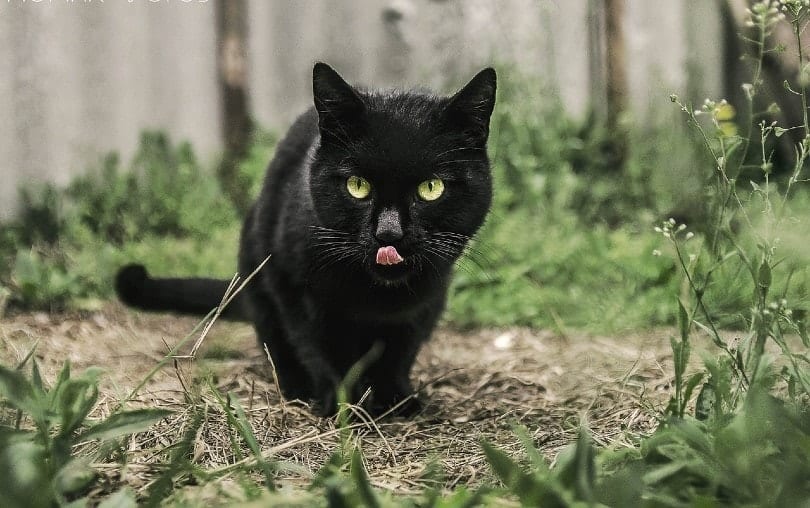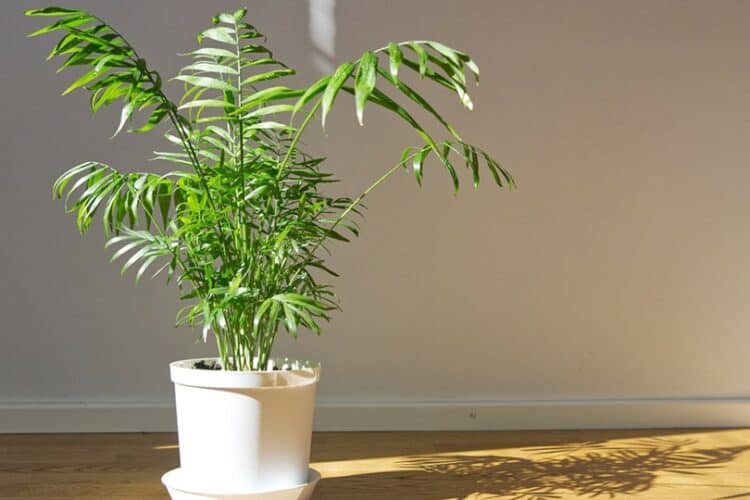You may have already had a run-in with a toxic plant and a hungry kitty, and now you’re worried after they’ve taken a bite or two of your parlor palm. We understand the fear but take a breath, pet parent, your rascally cat will be just fine.
Parlor palms are non-toxic and won’t harm cats in the least. In fact, they are a great option if you’re looking for feline-friendly houseplants. Let’s learn more about why cats eat plants, other great non-toxic houseplants you can add to your home, and some tips to keep your kitty from eating them.
Understanding Why Cats Eat Plants
There are many reasons why cats eat houseplants. Young kittens are similar to human babies in that they explore with their mouths. If they found plants tasty or fun and engaging when young, they are more likely to continue the behavior as adults.
Another possible reason is that they are simply playing with the plant. The long fronds of a parlor palm are very tempting to play with, especially lower-hanging ones. A larger plant might even provide a nice place to hide!
One of the most common reasons your cat eats plants is boredom. If there are no other people or cats to engage with, they will find ways to entertain themselves. Even having a lot of toys for them may not be enough if they have become bored with the same ones.
Anytime a cat eats a plant, it may be unable to digest all parts of the plant material and throw up small bits of it. This is not harmful and may help clear hairballs if your cat is prone to them.

Other Non-Toxic Indoor Plants (And How to Verify)
There are health benefits to keeping indoor plants. They can help purify the air naturally and increase oxygen levels. The benefits listed below are just a short list of available options.
Palms:
- Bamboo palm
- Ponytail palm
- Majesty palm
- Chinese fan palm
- Rhapis palm
Ferns:
- Boston fern
- Bird’s nest fern
- Kimberly queen fern
- Maidenhair fern
- Sword fern
Flowers:
- Hibiscus
- Bromeliad
- Impatiens
- Roses
- Sunflowers
There are many other non-toxic plants, like most Calatheas and some succulents, that you can easily add to your home without putting your kitty in danger. However, it’s always best to confirm whether or not the plant is safe by checking with the ASPCA Toxic and Non-Toxic Plants List. Type in the common or scientific name of the plant in question and find out in moments whether it’s safe.
How To Stop Cats from Munching
Just because these plants are safe for your cat doesn’t mean you want them to help themselves to a snack. According to Chewy, there are some things you can do to help prevent or stop the behavior if it becomes a problem.
- Think about placement: This may not work for large palms that need to be placed on the floor, but smaller plants can be set higher or in hanging baskets.
- Make plants unappealing: If the leaves are the most interesting, you can try spraying a water and citrus mixture over them. If they tend to dig in the soil, you can add decorative rocks or a cover.
- Relieve boredom with intentional play: A wand or fishing-pole-style cat toy is similar to hanging plant leaves.
- Give them their own plant: Fresh catnip, wheatgrass, and cat grass are the most common. If they don’t seem to care for one type, try another until you find something that grabs their attention.
Final Thoughts
Parlor palms and other non-toxic houseplants can help make your home brighter, greener, and healthier for you and your kitties. You can even take steps to prevent kitties from eating your plants by offering them their own. Although non-toxic plants are not known to cause any reactions, you should always be aware of individual sensitivities and reach out to your vet if you notice anything abnormal after they’ve eaten a plant.
Featured Image Credit: Shutterstock














